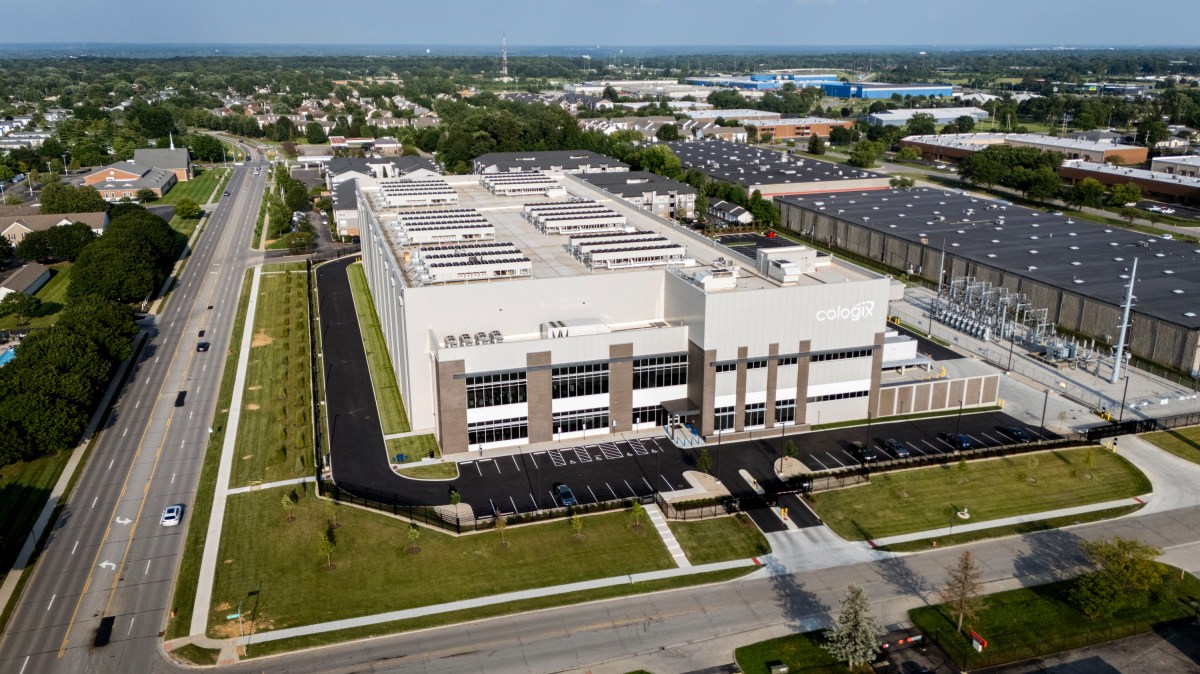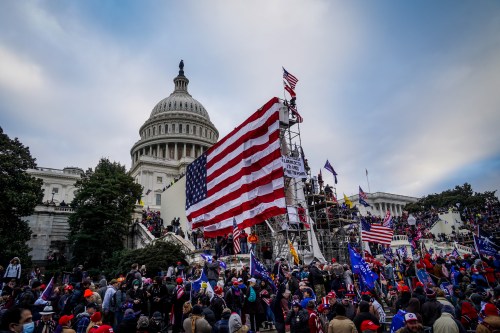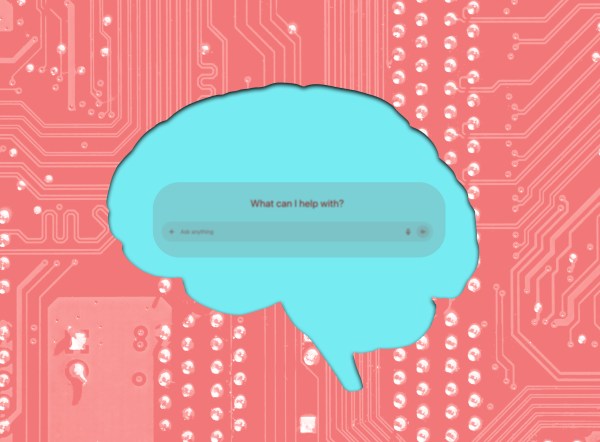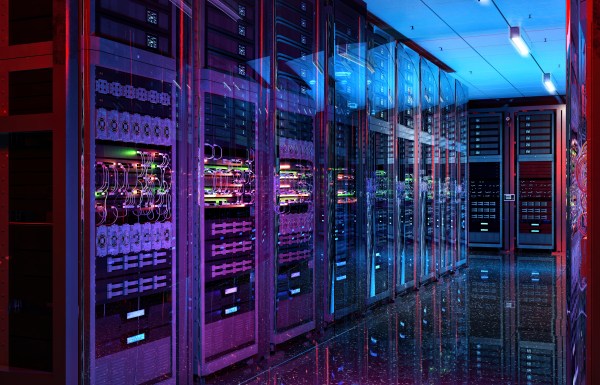Turn any article into a podcast. Upgrade now to start listening.
Premium Members can share articles with friends & family to bypass the paywall.
Happy Friday! This is the 1,500th issue of TMD! That sounds impressive, until you realize Joe Rogan’s podcast hits that milestone like every eight months. But thank you for starting your day with us, and here’s to 1,500 more!
Quick Hits: Today’s Top Stories
- A terrorist attacked a synagogue in Manchester, England, on Thursday, leaving two dead and three seriously wounded. As Jewish worshippers gathered for Yom Kippur—the day of atonement, considered the holiest day of the year in the Jewish calendar—the attacker rammed his car into the crowd before exiting the vehicle and stabbing several people. Police shot and killed the assailant—who authorities identified as Jihad Al-Shamie, a 35-year-old British citizen of Syrian descent—and arrested three other individuals in connection with the attack. This morning, Manchester police announced that one of the victims who died appears to have been killed by police gunfire, and that one of the three surviving victims had also suffered a gunshot wound. British Prime Minister Keir Starmer condemned the attack and announced plans to deploy police to synagogues across the country in response. According to the Community Security Trust, an advocacy group for British Jews, 1,521 antisemitic incidents were recorded in Britain in the first half of 2025.
- The Trump administration is planning to announce “substantial support” for farmers on Tuesday, Treasury Secretary Scott Bessent said Thursday. U.S. farmers have been hit hard by recent trade wars launched by President Donald Trump, particularly after China’s decision to stop buying soybeans from the U.S. While administration officials have not announced the specifics of such support, the Wall Street Journal reported on Wednesday that $10 billion total could be given directly to farmers. “I WILL NEVER LET OUR FARMERS DOWN!” Trump wrote on Truth Social on Wednesday. “MAKE SOYBEANS, AND OTHER ROW CROPS, GREAT AGAIN!”
- The U.S. Department of Energy announced Thursday that it would cancel 321 financial awards, totaling $7.56 billion in funds, intended to help finance 223 clean energy technology projects. According to the department, the projects did not sufficiently advance the nation’s energy goals, were not economically viable, and would not provide a positive return on taxpayer dollars. “Nearly $8 billion in Green New Scam funding to fuel the Left’s climate agenda is being canceled,” Office of Management and Budget Director Russ Vought wrote on X, adding that the affected projects were primarily based in states led by Democratic governors.
- On Thursday, the Food and Drug Administration announced it had approved a generic version of the abortion pill mifepristone from Evita Solutions, the second drug manufacturer to receive such approval. “Recent studies already point to serious risks when mifepristone is used without proper medical oversight,” Health Secretary Robert F. Kennedy Jr. tweeted Thursday, noting that the FDA “only approved a second generic mifepristone tablet because federal law requires approval when an application proves the generic is identical to the brand-name drug.” News of the approval caused swift backlash from Republican lawmakers and pro-life advocacy groups, with Students for Life Action calling it “a stain on the Trump presidency and another sign that the deep state at the FDA must go,” Sen. Josh Hawley posting on X that he had “lost confidence in the leadership at FDA,” and Susan B. Anthony Pro-Life America president Marjorie Dannenfelser declaring the decision “reckless” and “unconscionable.” Evita Solutions had first filed for approval in October 2021, and was approved nearly four years later on September 30.
- The White House sent nine universities a 10-page “Compact for Academic Excellence in Higher Education” on Thursday, offering federal funding and other incentives should they follow the administration’s list of recommended guidelines. The administration’s requests included capping the enrollment of international students at 15 percent of the undergraduate student body, requiring SAT or ACT in undergraduate admissions, and banning any “institutional units” that “punish, belittle, and even spark violence against conservative ideas.” The Wall Street Journal first reported on the document on Tuesday.
- Greenland Prime Minister Jens-Frederik Nielsen said on Thursday that he wanted to “expand and strengthen” the Danish island’s relationship with the European Union. “We see great opportunities in a closer cooperation with the EU to benefit the Greenlandic people and development,” he told reporters while attending a European Political Community meeting in Copenhagen. Last week, European Commission President Ursula von der Leyen announced that the EU would double its financial aid to Greenland, from 225 million euros (U.S.$265 million) to 530 million euros (U.S.$620 million), and, according to Politico, reached a minerals agreement with the island territory.
- Makeshift scaffolding collapsed at a church in Ethiopia’s Amhara region on Wednesday, killing at least 36 people and injuring approximately 200 others. Pilgrims had gathered to mark the annual Virgin Mary festival at the Menjar Shenkora Arerti Mariam Church. District police chief Ahmed Gebeyehu told state media the death toll could rise.
- In a memo sent to several congressional committees, which several news outlets reported on Thursday, Trump said that the U.S. was engaged in a “non-international armed conflict” with drug-trading cartels, emphasizing the need to “use force in self-defense and defense of others against the ongoing attacks by these designated terrorist organizations.” Last month, the White House ordered military strikes on three separate suspected drug trafficking boats believed to be smuggling cocaine, killing those aboard. Meanwhile, an unnamed senior administration official told Semafor on Thursday that the White House has not ruled out striking within Venezuelan territory.
- Moroccan Prime Minister Aziz Akhannouch said on Thursday that three protesters had been killed in anti-government demonstrations in cities including Casablanca and Rabat, the capital. The largely youth-led protests erupted earlier this week as activists called on the government to spend more on public services and criticized spending toward preparations for the 2030 World Cup to be held jointly by Morocco, Portugal, and Spain. Moroccan authorities reported that another 23 civilians were injured in the protests, in addition to 263 security force officials. Akhannouch said in a televised address on Thursday that he is ready to engage in “dialogue and discussion within institutions and public spaces,” though many demonstrators have called for his immediate resignation.
- Bloomberg first reported on Thursday that OpenAI has agreed to sell shares to investors at a price that values the tech company at $500 billion, a higher valuation figure than any other privately owned entity, surpassing SpaceX. In all, the company agreed to sell approximately $6.6 billion of stock to a diverse group of investors, including SoftBank Group Corp, T. Rowe Price, and the Abu Dhabi-based MGX.
- Australian regulators ordered the recall of additional sunscreen brands after determining that the Sun Protection Factor (SPF)—a measurement of the degree of protection against UV radiation—was significantly lower than what was labeled. Some sunscreen products, such as one brand recalled in August, had an SPF of 4 but were marked as offering 50 or more SPF protection. On Tuesday, Australia’s Therapeutic Goods Administration determined that a base formulation—made by the manufacturer, Wild Child Laboratories, and used by at least 17 different sunscreen producers—was ineffective.
- On Tuesday, 26 people were killed in north-central Nigeria after the boat transporting them down the Niger River, carrying mostly traders en route to a local market, sank. Nigerian officials announced the incident on Wednesday, but did not publicly state the cause of the accident, which occurred in Nigeria’s Kogi State.
A message from The Dispatch
Stay Ahead of the Curve With Dispatch Energy
The Dispatch’s newest weekly newsletter will dive into the politics, policy, and innovation shaping America’s energy future, presented by Pacific Legal Foundation. Featuring a rotating roster of contributors who are experts in their respective fields, each edition will feature incisive analysis on everything from oil and gas and permitting regulations, to renewables, climate, and the grid.
Watt’s Next?

It’s rare to hear the size of a building compared to the area of a city. But in the treelined fields of rural northeast Louisiana, Meta is building their latest AI datacenter, which—as Meta CEO Mark Zuckerberg wrote on Facebook—“is so large it would cover a significant part of Manhattan.” Filled from floor to ceiling with the most expensive, advanced chips on the planet, Meta will use the 4-million-square-foot data facility to support its growing AI business. And it’s not alone in building facilities like this.
Across the country, tech companies like Meta, Google, Microsoft, and OpenAI are competing in a modern-day space race—except the end goal isn’t getting man to the moon, it’s putting hundreds of thousands of high-powered graphic processing units (GPUs) into supersized warehouses in states like Texas, Virginia, and Georgia. Along with offering nine-figure salaries to AI researchers, tech giants are pouring billions of dollars into the infrastructure needed to train and run AI models. OpenAI—the creator of ChatGPT—is building five new massive data centers across the U.S., as part of its Stargate platform, and CEO Sam Altman says the company could invest trillions of dollars into AI infrastructure in the “not very distant future.” According to research by McKinsey & Company, AI processing loads will require more than $5 trillion in data center investment worldwide by 2030 as AI workload demand more than triples from 44 gigawatts of capacity in 2025 to nearly 160 gigawatts in 2030. That’s the equivalent of 160 large nuclear reactors running at full output.
As a non-paying reader, you are receiving a truncated version of The Morning Dispatch. You can read our full item in the members-only version of TMD.
The race to build AI data centers is fast becoming the largest private infrastructure project of the century, as businesses seek to lay the foundations for a technology that could fundamentally reshape the global economy. The cloud, after all, doesn’t actually live in the clouds; it lives in row after row of wire-strewn servers packed into warehouses across the world. But data center construction isn’t as easy as building four walls and plugging in some GPUs. Public pushback, regulatory complexity, supply chain bottlenecks, and energy scarcity are substantial barriers to meeting global computing needs.
Data centers aren’t a new phenomenon—there are currently thousands in operation across the U.S. that store, process, and distribute millions of terabytes of data every day. The data centers used by cloud computing platforms like Microsoft Azure, Oracle Cloud Infrastructure, and Amazon Web Services are an essential part of the online ecosystem, allowing you to do everything from book a flight on Orbitz to access online banking and stream the latest episode of Love Island. However, the computational power needed to train and operate large AI models far exceeds the capacity of a typical data center. High-powered GPUs, such as the Nvidia H100, cost tens of thousands of dollars per unit, and a single data center can run more than 100,000 chips to power leading-edge AI models.
Many Americans’ most frequent interactions with AI are somewhat flippant—poorly rendered TikTok videos of glass bridges breaking in China, virtual romantic partners available 24/7, and illustrations that make you and your friends look like characters from a Studio Ghibli film. But the technology is also driving real and meaningful advances. Startups like Axiom and Periodic Labs are leveraging AI to push the frontiers of research in mathematics, physics, and chemistry, while AI programs like Google DeepMind’s AlphaFold are helping scientists better understand proteins as they seek new treatments for diseases such as Alzheimer’s and Parkinson’s. While smaller AI tools can run locally on a phone, projects like these rely on the computing power made available by AI data centers—data centers that the AI industry believes we desperately need more of.
Building out America’s AI infrastructure requires one thing above all else: power. “Depending on whose numbers you trust, an AI prompt consumes either 10 times or up to 100 times more electricity than a conventional search query,” Lynne Kiesling, the director of the Institute for Regulatory Law and Economics at Northwestern University and a contributor to Dispatch Energy, told TMD.
In the U.S. alone, the share of electricity used by data centers is expected to more than double by 2030, according to the Electric Power Research Institute, increasing from around 4 percent today to over 9 percent by the end of the decade. That percentage is already much higher in parts of the U.S. where data centers are highly concentrated, and is already contributing to soaring wholesale energy prices. In Virginia, for example—where the proliferation of data centers has already earned it the nickname Data Center Alley—data center power usage accounted for more than a quarter of the state’s total electricity consumption in 2023.
“When you look at the long-term problems, I think energy generation is the absolute biggest one,” Will Rinehart, a senior fellow at the American Enterprise Institute focused on tech policy, told TMD. Over the past several decades, there has been relatively little demand growth for energy across the U.S., but states and utility providers are now scrambling to figure out how to add the energy capacity needed to support data center projects—a prospect most haven’t had to tackle for decades. “We’re trying to get back to a world where we’re building new energy power plants, and we really haven’t had to do that for a very long time because there really just hasn’t been the demand for energy,” Rinehart said.
In the short term, that energy ramp-up will likely derive mainly from increased solar production while firms work to build out additional natural gas and nuclear solutions. “You try to get the most bang for your buck out of the existing capacity of the system while you’re building out more natural gas generation,” Kiesling said. Additional nuclear power, on the other hand, may take a bit longer to bring online. “For nuclear to play a big role, I think we’re going to have to wait until the next decade,” Jacopo Buongiorno, a professor of nuclear engineering and director of the Center for Advanced Nuclear Energy Systems at MIT, told TMD. “Because even if you make the decision to build now, particularly large reactors, it takes a minimum of six, seven, or eight years to get it online.”
Buongiorno remains optimistic that nuclear energy can help alleviate some of the short- and medium-term energy demand driven by data centers. Several nuclear plants that were previously shuttered, such as one of the reactors at Pennsylvania’s Three Mile Island, are being restored and brought back online, while other currently operating plants can be reconfigured to generate more electricity. “We could see maybe an additional five or six gigawatts coming out of the existing fleet of reactors in the form of power upgrades,” Buongiorno said. “So overall, you’re looking at maybe between 10 to 15 percent, optimistically, of the overall demand will be covered by nuclear, even if you don’t build a new plant.”
Utility providers are also facing rising costs for the equipment needed to actually connect new energy projects and data centers to the grid. “All of the stuff we use to build the grid and expand it costs roughly twice what it did five years ago,” Joshua Rhodes, a research scientist at the University of Texas at Austin, told TMD. Components like transformers, which are mostly imported from abroad, are becoming increasingly difficult and expensive to access, creating bottlenecks for utility providers as they strive to connect new projects to state energy infrastructure.
Energy transmission is particularly complex because the structure of utility regulation varies widely from state to state, meaning firms must navigate vastly different regulatory environments depending on where they intend to build data centers or new energy projects. In states like Texas, where energy markets are relatively unregulated, dozens of providers might compete to provide grid access to a project. Other states, like Georgia, are vertically integrated under a single state monopoly—a structure that the state believes could give it a competitive advantage in attracting new energy projects and AI data centers.
“The way our structure is in Georgia, we’re also able to rapidly ramp up and produce more energy and build out the transmission that you need for [data centers], unlike a lot of other markets around the United States,” Georgia Gov. Brian Kemp told TMD.
However, there are also experts in the energy and computing sectors who question whether a data center boom is even necessary. “Because everything can change very fast with computing, it’s easy to extrapolate a fast growth rate for a few years, and you get crazy numbers,” Jonathan Koomey, who researches energy usage for computing, told TMD. Nazar Khan, CTO of Terawulf, an AI data center company with multiple sites in New York, echoed the sentiment, telling TMD that uncertainty is a key aspect of the data center race. “The headlines that you see, I think, are overly deterministic on what state of play is and what’s going to happen,” Khan said. “There are so many moving pieces here, and this intersection of energy, policy, local issues, tech, and data, I mean, it’s all kind of intermingled and intertwined.”
Bubble or not, AI companies, utilities providers, data center builders, and state regulators are now navigating an infrastructure build-out that is almost unprecedented in scale. And that race for computing power extends far beyond the shores of the U.S., reaching into the Middle East, Europe, and Asia. “I just think we have to win the AI race,” Gov. Kemp said. “There’s good and bad things about AI and concerns that I have, but we still, regardless, we have to win this race when you think about economic issues and especially national defense and security issues.”
In May, OpenAI announced that it would expand its Stargate AI infrastructure platform to the United Arab Emirates by building a massive 1 gigawatt data center in Abu Dhabi. Meanwhile, Saudi Arabia recently began constructing its first-ever data centers, using chips imported from the U.S. Global competition for AI infrastructure is especially pertinent in the case of geopolitical rivals like China, where the government is using industrial policy to accelerate the growth of AI models like DeepSeek and Qwen. After DeepSeek released its R1 model in January 2025, markets were shaken by its potential to compete with leading U.S. programs. However, users quickly realized that the model was shot through with Chinese government censorship and prone to repeating Chinese Communist Party talking points when asked about controversial subjects like the Tiananmen Square massacre, repression of the Uyghurs, and even Chinese President Xi Jinping’s resemblance to Winnie the Pooh.
“If we can’t trust other countries to treat the training process truthfully, then we’re going to have less reliable models,” Kiesling said when asked about whether the U.S. could rely on AI models developed and trained in foreign countries. “Yeah, you can do your training in Saudi Arabia, no problem. But then it’s a question of, well, how much government intervention is there? How much censorship is there in the way they operate? Are they going to be treating the data truthfully?”
Others worry that AI threatens to upend the labor market at a rate not seen since the Industrial Revolution. But with the potential for trillions of dollars in AI infrastructure investment over the next decade, opportunities for states to benefit are in surplus, and almost everyone is going to try to get at least a small piece of the pie. “More jobs than people realize will be tied to all this at the end of the day,” Gov. Kemp said. “And that’s what we’re excited about.”
Today’s Must-Read
Most everyone is familiar with Thomas Jefferson’s views on cities. “I view great cities as pestilential to the morals, the health and the liberties of man,” he wrote to fellow Founding Father Benjamin Rush in 1800. Years earlier, Jefferson said that the “mobs of great cities add just so much to the support of pure government, as sores do to the strength of the human body.” Instead, Jefferson set out an agrarian vision for the young republic, where republican virtues would be nourished not in overcrowded cities, but among the open lands of a growing nation. Likewise, government should be small and restrained, to allow the protection of individual liberties. Jefferson’s opposite was Alexander Hamilton, whose vision was decidedly urban and commercial. Their dueling visions fueled the first great factional fight in American history, between Hamilton’s Federalists and Jefferson’s Democratic-Repubican Party. This divide continues to be relevant in our own fractured and fractious age.
Toeing the Company Line
The Advent of the ‘Abundance’ Movement
The push for permitting reform represents a rare moment of bipartisan agreement.
Dealing the Cards
Three theories of Trump’s hawkish turn on Ukraine.
Dress Codes vs. Codes of Honor
Pete Hegseth’s selective interpretation of what a soldier should look like.
The Art of the Defamation Deal
Donald Trump’s new business model is the presidential ‘strike suit.’
No Evidence Indicates FBI Agents Acted as ‘Agitators’ on January 6
Trump claimed that 274 agents reportedly present that day were not acting as ‘Law Enforcement Officials.’
The Lamest Showman on Earth | Roundtable
‘Trump is the most anti-American politician of our generation.’
Worth Your Time
- There’s great concern about the employment risks posed by automation and artificial intelligence, but one of the easiest ways to save tens of thousands of lives per year would be to embrace self-driving cars. As Kelsey Piper writes in a piece for The Argument, “If you were to cut U.S. traffic accident deaths by 80%, you would save more than 31,000 lives every year — more lives than you would save if you magically prevented all U.S. homicides. Or all U.S. skin cancer.” And, “while no one has a cure for homicide that I’m aware of, we do have a pretty good cure for car accidents: self-driving cars.” As Piper writes, the real-world test miles of companies like Waymo show that the average computer is just a far safer driver than the average person: “Timothy Lee over at Understanding AI regularly takes a close, thoughtful look at Waymo’s incredible safety data, which indicates that Waymos are about 80% less likely to get into a serious crash than human drivers. Remarkably, this likely understates how many lives could be saved by self-driving cars since most Waymo crashes were the fault of the other driver. According to the Understanding AI team, which reads every serious crash report, of the 30 to 40 crashes in each six-month period they examine, in only one or two was the Waymo at fault — and there have been no fatal crashes that were Waymo’s fault (fatal crashes are rare enough in self-driving cars that you would not necessarily expect any in Waymo’s 100 million miles driven).”
- Taylor Swift’s 12th and latest album, The Life of a Showgirl, is officially out—and has been the soundtrack to the edit of today’s TMD. In his New York Times review, pop music critic Jon Caramanica says the album is defined by Swift’s hunger “to move on from the battles of her past and into the embraces of her future,” and “takes the songwriting intimacy of her ‘Folklore’/‘Evermore’ era and renders it with more clarity and oomph.” As he writes, “‘Showgirl’ isn’t a hard pivot like ‘Red’ or ‘Reputation,’ risky-in-their-moment albums that expanded Swift’s musical palette. Topically, it feels most kin to ‘Reputation,’ but her collaborators aren’t slathering her in gloss or skronk here, instead letting her songwriting breathe. It is also something of an Eras Tour in miniature — ‘Cancelled!’ sounds like a ‘Reputation’ outtake; ‘Ruin the Friendship,’ about a missed teen connection, recalls the wide-eyed ‘Fearless.’ In that way, ‘Showgirl’ is a more cogent form of chaos than Swift’s prior two albums, ‘Midnights’ and ‘The Tortured Poets Department,’ which were unwieldy and centerless.”
Presented Without Comment
Reuters: It’s No Cold War – It’s a ‘Fiery’ Conflict Now With the West, Russia Says
“I would disagree with the comparison with the Cold War,” Russian Foreign Ministry spokeswoman Maria Zakharova told reporters when asked if there was now a new Cold War with an “Iron Curtain”-like drone wall being built in Europe. “We are already in another form of conflict. There has been no cold here for a long time; there is already fire here.”
Also Presented Without Comment
Fox News: David Hogg’s PAC Spent Millions on Consultants, Ads and Fitness Classes, Records Show: Report
Despite pledging to spend $20 million to back younger, more progressive candidates, a PAC led by Democratic activist David Hogg has spent millions of dollars on political consultants, ads and even fitness classes. The PAC, Leaders We Deserve, spent just $455,000 to back three candidates in tough Democratic primary races over the first eight months of 2025, Axios reported. That figure stands in contrast to the roughly $2.5 million spent on consultants, $1.1 million on digital ads, $965,000 on building donor lists and nearly $5,000 on the fitness class subscription service ClassPass, according to federal campaign filings.
Also Also Presented Without Comment
The Hill: Meme Battle Consumes Government Shutdown Messaging War
Let Us Know
Have any thoughts or questions about today’s newsletter? Drop us a note in the comments—Ross reads every submission, and your question could be featured in TMD’s new segment, coming Monday.
Correction, October 3, 2025: This newsletter has been updated to reference “transformers” rather than “transistors.”


















Please note that we at The Dispatch hold ourselves, our work, and our commenters to a higher standard than other places on the internet. We welcome comments that foster genuine debate or discussion—including comments critical of us or our work—but responses that include ad hominem attacks on fellow Dispatch members or are intended to stoke fear and anger may be moderated.
With your membership, you only have the ability to comment on The Morning Dispatch articles. Consider upgrading to join the conversation everywhere.